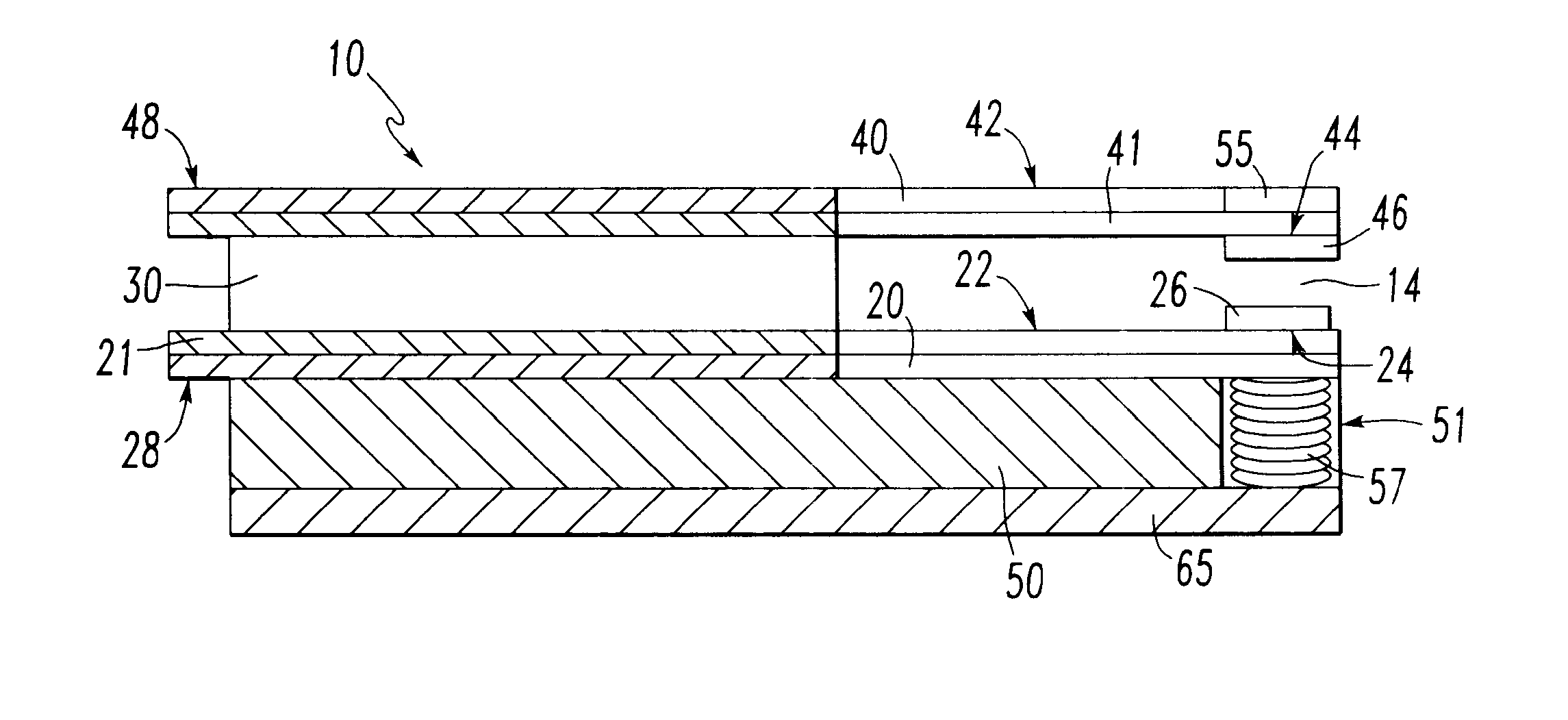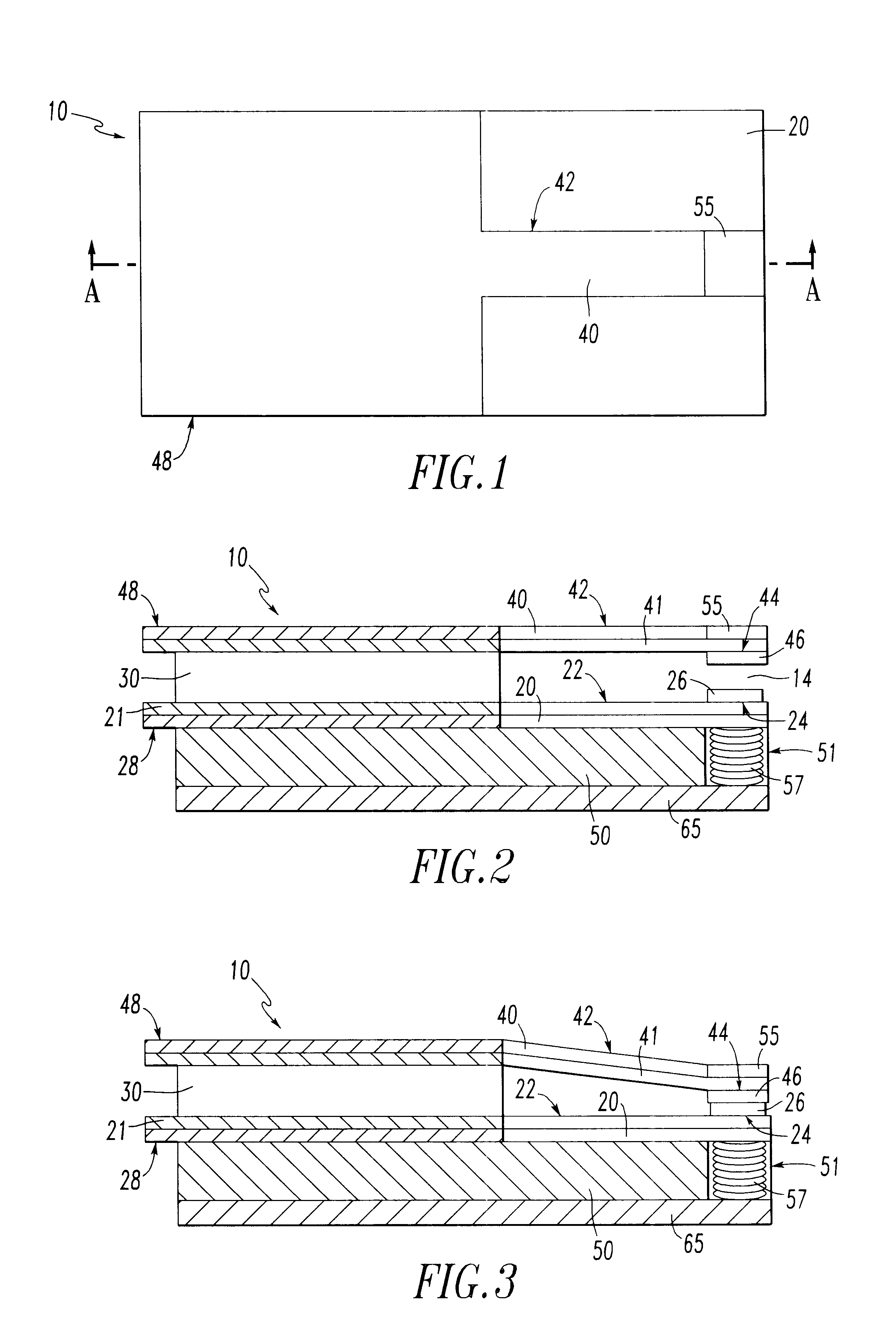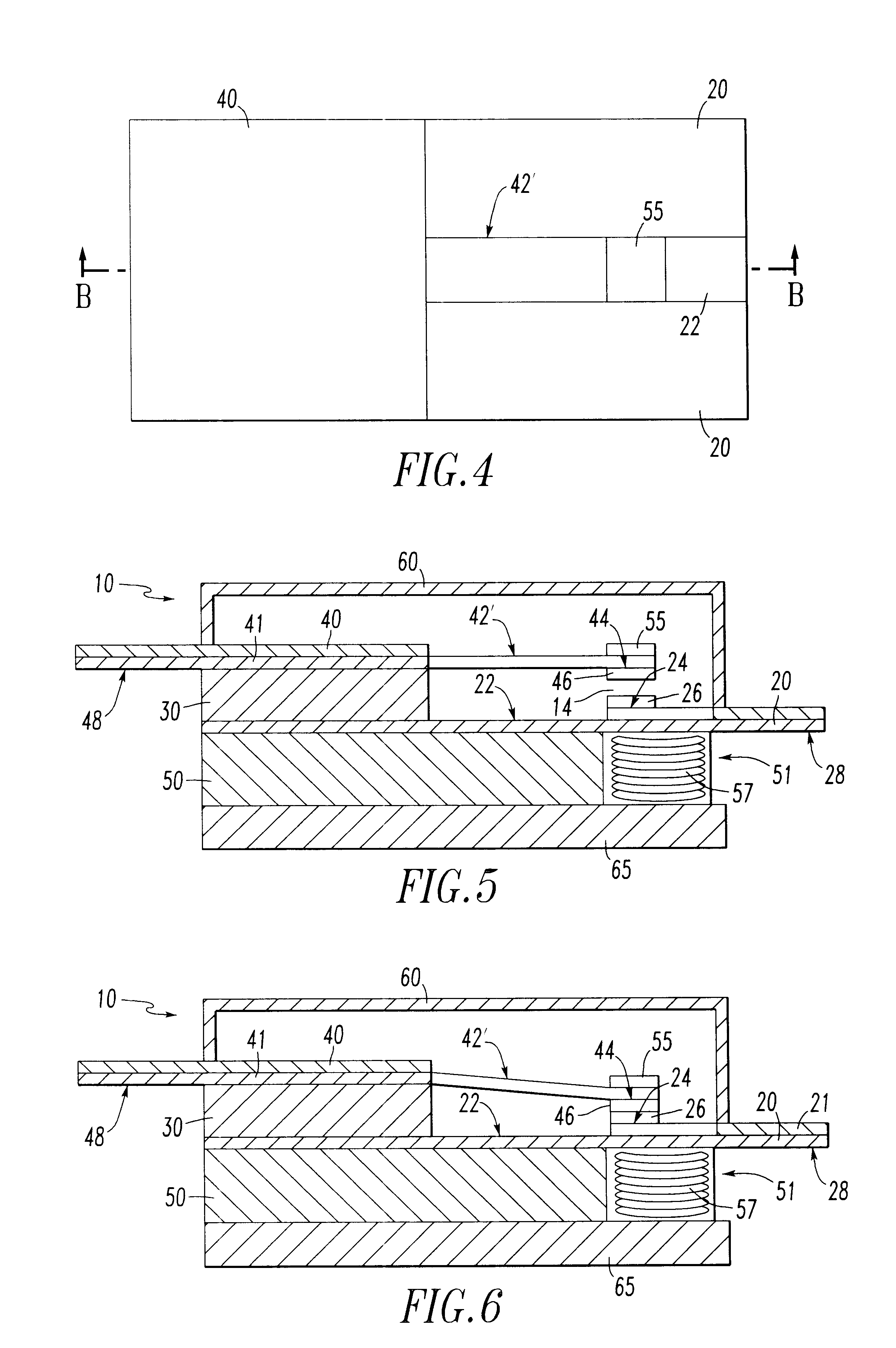Laminate-based apparatus and method of fabrication
a technology which is applied in the field of laminate-based apparatus and fabrication method, can solve the problems of limiting the repeatability of performance, undesirable variability, and individual devices produced by such a "assembly-line" type process, and generally having relatively complex structures
- Summary
- Abstract
- Description
- Claims
- Application Information
AI Technical Summary
Benefits of technology
Problems solved by technology
Method used
Image
Examples
Embodiment Construction
Referring now to the drawings for the purposes of illustrating embodiments of the invention only, and not for purposes of limiting the same, the Figures show various laminate-based electromechanical relay devices, fabricated according to the method of present invention from layers of dielectric material laminated together to form a unitary three-dimensional electromechanical structure. While the present laminate based. fabrication method may, for example, permit the straight forward fabrication of electromechanical relay devices that are optimized to function as controlled impedance structures at microwave frequencies, such as, those shown herein in the Figures, one of average and ordinary skill in the art will appreciate that the present invention may be successfully employed to fabricate myriad of other electromechanical devices. Therefore, it will further be appreciated that the laminate-based electromechanical relay devices referred to herein in the Figures and in the following ...
PUM
| Property | Measurement | Unit |
|---|---|---|
| electrically conductive | aaaaa | aaaaa |
| photo resistance | aaaaa | aaaaa |
| magnetic | aaaaa | aaaaa |
Abstract
Description
Claims
Application Information
 Login to View More
Login to View More - R&D
- Intellectual Property
- Life Sciences
- Materials
- Tech Scout
- Unparalleled Data Quality
- Higher Quality Content
- 60% Fewer Hallucinations
Browse by: Latest US Patents, China's latest patents, Technical Efficacy Thesaurus, Application Domain, Technology Topic, Popular Technical Reports.
© 2025 PatSnap. All rights reserved.Legal|Privacy policy|Modern Slavery Act Transparency Statement|Sitemap|About US| Contact US: help@patsnap.com



